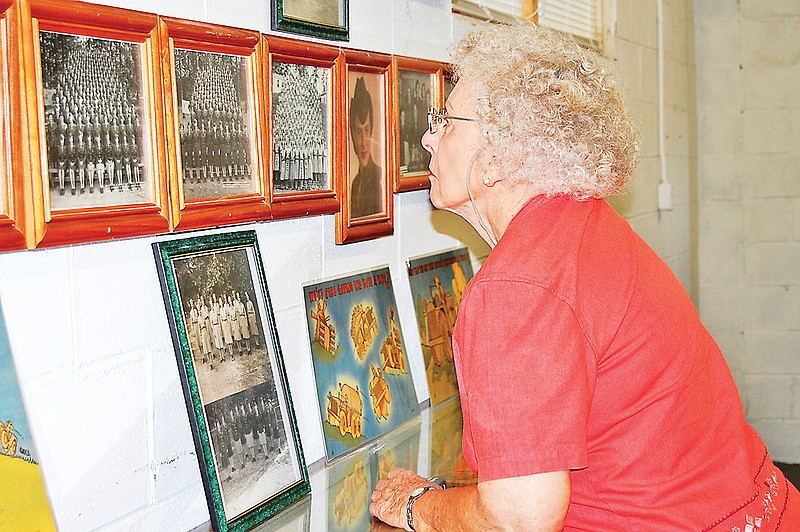Though Chattanooga National Cemetery personnel say they have no way of knowing how many women veterans are among the 44,000 veterans buried there on this Memorial Day, their place in the cemetery and their contributions are not forgotten.
"Women are a vital part of our armed forces now," says Brian Autry, a ranger with Chickamauga and Chattanooga National Military Park.
But, as he noted in a program he presented in March, they actually have been a vital part from days of the Revolutionary War to Afghanistan today.
Until World War II, though, women's service in time of national conflicts was not in large numbers. A monument in the Memorial Circle of Honor at the Chattanooga National Cemetery's highest point pays homage to that service during that war.
The Women of World War II monument honors the 350,000 who served between 1941 and 1945. Its inscription reads: "In honor of women who served in all branches of the service, American Red Cross, and all government positions all over the world."
But it just as well could honor the millions who joined the workforce during the war years. Indeed, during those years, the female percentage of the workforce increased from 27 percent to nearly 37 percent.
The first of those women's groups in the armed forces during the war -- beginning in May 1942 -- were members of the Women's Army Auxiliary Corps, later called the Women's Army Corps (WAC). Throughout the duration of the war, they took their place in more than 200 non-combatant jobs in the United States and also in every theater of the war.
An early WAC recruiting pamphlet speaks of the urgency for women, noting that "this war is bigger, more terrible than any in history. To win it, you, the women of America, are needed as well as your men."
"You don't pull triggers or fire cannon," the pamphlet explains. But "it's serious work. It isn't a tea party. But to a patriotic American woman, it's a real and important challenge."
By the end of the combat, women also joined the Navy WAVES (Women Accepted for Volunteer Emergency Service), the WASPs (Women's Airforce Service Pilots), the SPARs (Women's Reserve of the U.S. Coast Guard Reserve) and the MCWR (Marine Corps Women's Reserve).
During the war, between 460 and 543 women -- counts vary -- died in service of the United States.
Just south of Chattanooga, during the war, Fort Oglethorpe was the largest training center of the Women's Army Corps.
The women began arriving on Jan. 3, 1943, and by September 1943, all the men had left the post. Eventually, 5,000 women a week -- and 50,000 in all -- underwent basic training there. President Franklin D. Roosevelt even came to take a peek at the goings-on in April 1943 and was treated to a parade on the grounds of the base.
A recent online commercial sales listing for a downtown building at 1407 Market St., conveniently adjacent to Terminal Station (now the Chattanooga Choo Choo Hotel), describes what Chattanooga's proximity to Fort Oglethorpe meant to the men -- and then the women -- of the base.
The building, according to the listing, housed a restaurant established around 1920 and called The Victory in honor of the country's victory over Germany in World War I. The cook allegedly lived upstairs, and the owners didn't have a lock on the front door because the restaurant was open 24 hours a day.
During WWII, the restaurant was owned by Victor Bush and was called Bush's Spaghetti House. Usually flooded with men shipping out on trains and women from the nearby base, the restaurant could get a little rowdy.
The crowds, according to the listing, "finally made it necessary for Victor to put a lock on the door to prevent 'eat and runners' and to keep the customer occupation limits within the required legal code."
Nevertheless, Gen. Douglas MacArthur, supreme commander of United States forces in the Southwest Pacific area during the war, called women of the Women's Army Corps "my best soldiers."
"There was not a whole lot of back talk" from them, MacArthur felt, according to Autry, "and they were easy to train. He was impressed with them."
Women's roles in the country's armed forces have only increased since then, and they are mandated to be integrated into all military occupational specialties by January 2016.
So, as tiny flags, planted by area Scout troops on Saturday, flutter over the Chattanooga National Cemetery today, we give thanks for all the men who served their country in its various wars. But neither should we forget the women buried there, who also served in wars or served on the home front, and the women who, increasingly, serve beside men on the battlefields today.
